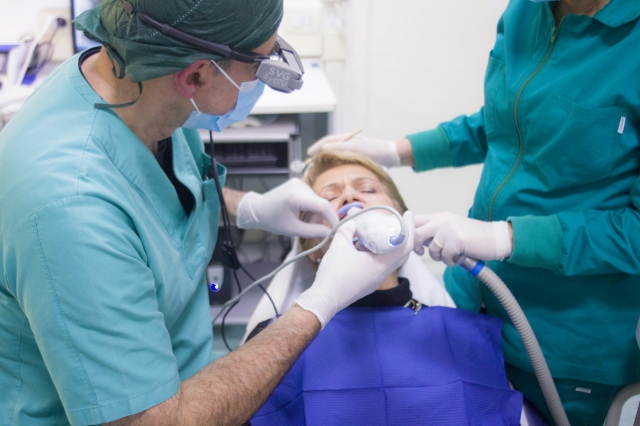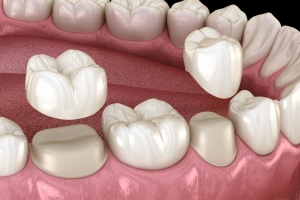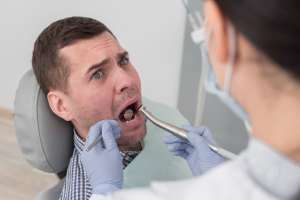The search for a healthy smile often inhabits two perpetrators that act against the smile: plaque and tartar. They do not seem dangerous at first, but slowly and imperceptibly can have tragic consequences leading to a cascade effect starting with mild cavities, major gum infections, and strong bad breath. Learning what this disastrous duo is and knowing their formation is basic; their removal, however, is life-saving for the maintenance of perfect oral hygiene and for halting the installations of any more serious dental problems.
What is Plaque?: The Sticky and Invisible Danger
Plaque, often sticky and clear or pale yellow, forms on the teeth continuously. It is a biofilm-a complex community of bacteria, food debris, and saliva. After every bite or sip, particularly sugary or starchy foods, plaque bacteria produce acid. Acid, an enamel's greatest enemy, slowly dissolves it, creating tiny holes beforehand, which later develop into cavities. Plaque also serves as an attachment to the surfaces of teeth and gums that could lead to further problems if not regularly removed. Sometimes, you cannot see the plaque, but you can sure feel it as a fuzzy coating on the teeth by running the tongue over it.
Final Step to Tartar: When the Plaque Hardens
Untreated plaque, due to deficient brushing and flossing, hardens by absorbing calcium from saliva. And once hardened plaque is tartar or calculus. This calculus appears yellow-brown to possibly jet black and is porous with a rough surface texture. It formation happens along the gum line, both above (where it can be seen) and more dangerfully under the gum line where havoc ensues it is not even visible. Once converted to tartar, the plaque has formed an irregular surface, which will facilitate an even thicker buildup of plaque, and just spot-cleaning with a toothbrush will almost be useless.
The Damaging Impact of the Duo on Your Oral Health
Together, plaque and tartar can have profound and detrimental effects on your oral and even overall health:
Cavities (Tooth Decay): To reiterate, acids perhaps produced by plaque bacteria immediately attack the enamel leading to tooth decay. Tartar worsens the case by providing a sticky surface for more plaque.
Gum Disease (Gingivitis and Periodontitis): Plaque and tartar irritate the gums, causing inflammation, redness, swelling, and bleeding, resulting in gingivitis. However, this could evolve into a grim state called periodontitis, whereby the gums diminish their hold and start forming pockets between themselves and the teeth, becoming infected. This could result in the destruction of the supportive bone and tissue around the teeth and finally result in the loss of teeth.
Bad Breath (Halitosis): Bacteria living on plaque and tartar, allied through the trapped food, release gases with a very foul smell, resulting in prolonged bad breath that cannot be masked even with mouthwash.
Your Arsenal Against Plaque: Daily Habits are Key
Effective treatment for plaque requires a working and well-disciplined oral hygiene routine on a daily basis:
Brush Properly: Use a soft-bristled brush and fluoride toothpaste. Brush your teeth at least twice a day for two minutes each time, angling the brush at 45 degrees to the gum line using gentle circular motions. Remember to brush your tongue too!
Floss Daily: Brushing is not enough. Floss between your teeth and under the gum line, where plaque loves to hide. Be sure to use a new section of floss for each tooth.
Consider Mouthwash: Antiseptic or therapeutic mouthwash can provide additional help in reducing bacteria and fighting bad breath after brushing and flossing. It should never, however, replace mechanical cleaning.
Getting Tackled with Tartar: The Professional's Way
Here lies the glaring difference: a plaque can be removed at home; tartar cannot be brushed off. Once plaque calcifies into tartar, it adheres firmly to the surfaces of teeth. And this is the place where professional cleaning procedures become very important. Dental scaling is a technique by which dentists and dental hygienists remove tartar deposits lying above and below the gum line using special instruments. These are those hard deposits you sniff about, always wanting to smell pleasant; a definite call for a professional clean-up sake. Residents of Newmarket are very recently discovering wherein lies the trusted Newmarket dentist for complete scaling to remove tartar and full oral examination.
Preventive: More Than Just Daily Care
Well apart from brushing and flossing:
Watch Your Diet: Limit sugary and starchy foods and beverages as they are food supplies for bacteria forming plaque.
Stay Hydrated: Drink a lot of water after meals. This will help to wash down food particles and retain bacteria.
Dental Visits: Following the schedule of dental check-ups and cleanings every six months is very effective in detecting problems earlier and removing tartar.
Once you are aware of the nature of plaque and tartar, you can handle the two harm-causing elements by committing to both a good home care plan and a good professional cleaning. This is the most effective defense that can make your smile last another hundred years with pride.






